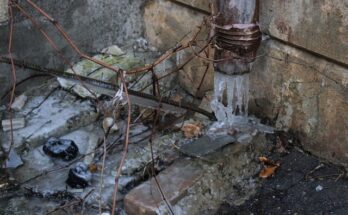Roofs can be made of many different materials and can come in many different shapes. Understanding those shapes is the subject of a different post. Understanding those materials is an important part of caring properly for your roof and selecting the right roof for your latitude and situation.
Here are some common roof material types in the United States, and specifically in the Cincinnati and Ohio Valley region. You can look here to see a brief description of some other, less-common roof types, including those that are unlikely to be found in our region.
Clay tile: often selected for their appearance to complement adobe or Southwestern-style homes, clay tiles are just as they sound. They are essentially orange clay half-tubes, placed with the open side down and their back to the elements. This is an expensive building touch, and not a common choice in the Ohio Valley region.
Composite shingles: Composite shingles, or asphalt composite shingles, are large rectangles of a tar-like substance with mineral flecks smaller than pebbles covering the surface and embedded within. Applied one row at a time and capped at the top with a different-shaped shingle with tar or pitch, these create a long-lasting waterproof barrier. The rectangles require a lot more work, but they fit well on small roofs or roofs with many chimneys and vents, such as a common residential home. These typically last up to 20 years if carefully monitored and maintained.
Rolled roofing: Rolled roofing is named for how the material looks before it is applied to a flat roof. This is usually used for a multi-family apartment complex or small business building as it is a cost-effective way to cover a long, unbroken surface area with a slight canter or tilt to prevent standing water. Sheets comprised of tiny mineral fragments and adhesive are slowly unrolled and flash-melted to the surface of the roof, creating a waterproof barrier that typically lasts around ten years.
Slate tile: For those who are searching for a near-permanent roofing solution in the Ohio Valley area, a slate roof might do the trick. Though it is very expensive and heavy, these slate rectangles are layered and adhered to the roof to create an impermeable barrier to the elements. Additionally, slate is common in this region, so the cost is largely spent on the material, not on transporting it from somewhere else.



